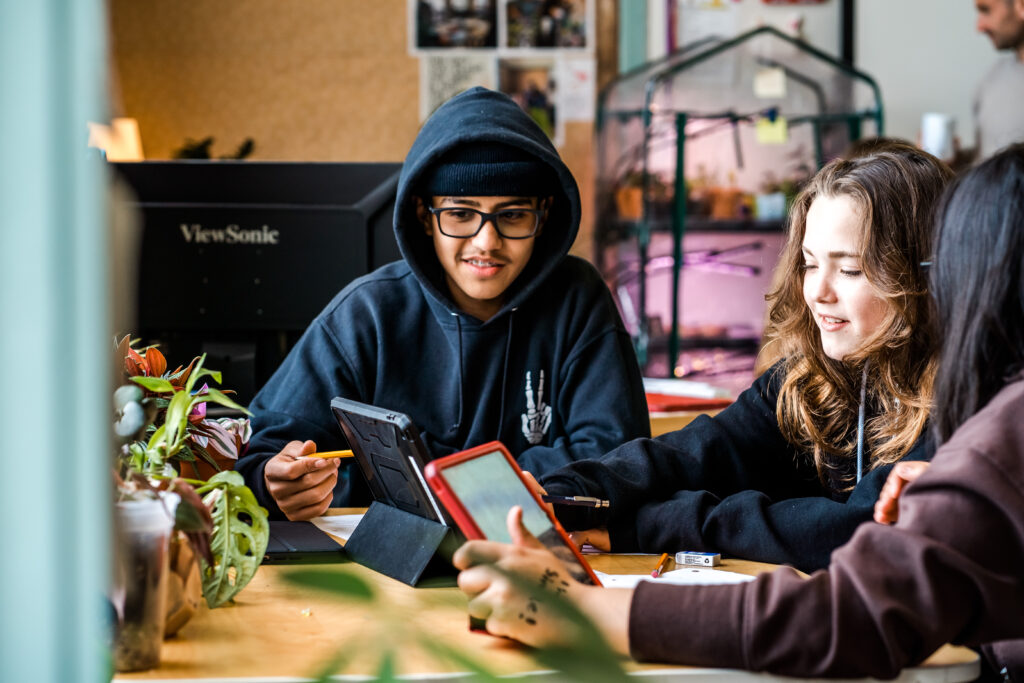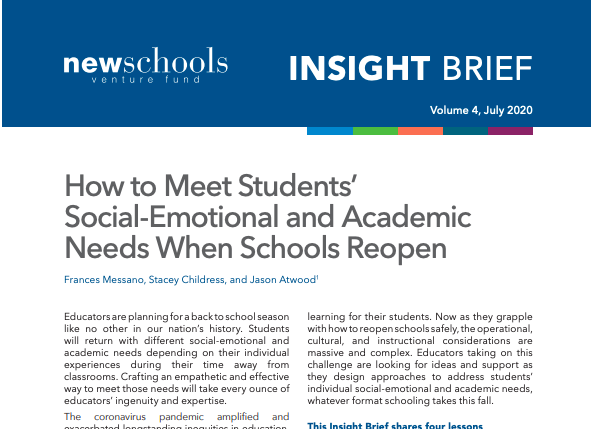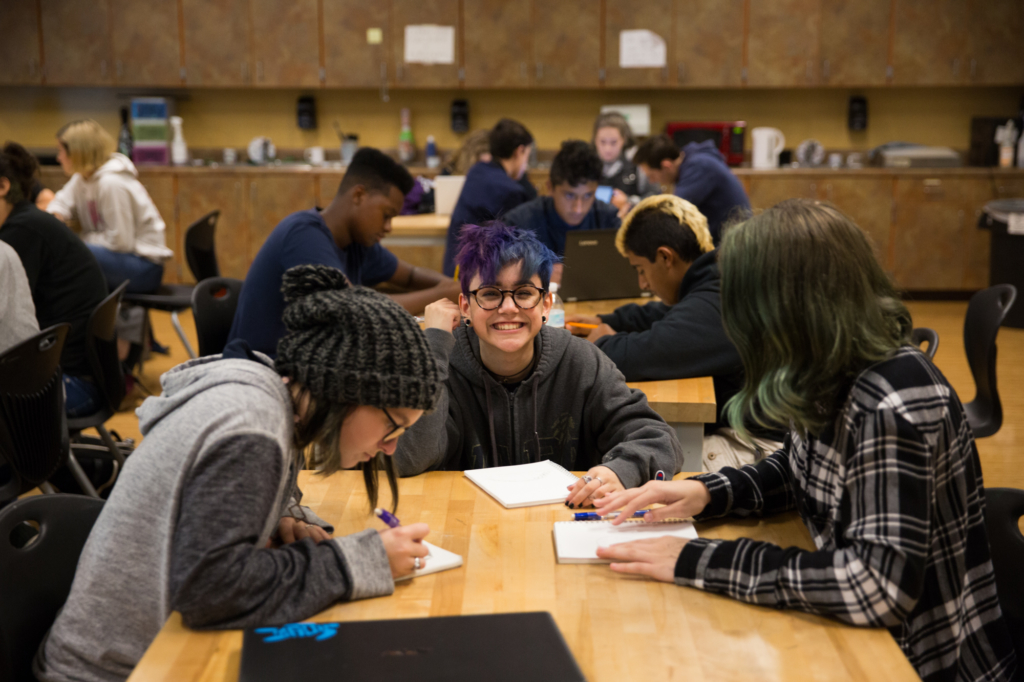By, Tonika Cheek Clayton, Managing Partner, NewSchools Venture Fund

As a K-12 ed tech investor who understands the landscape of tech tools used to support student learning, you might think my professional career had prepared me for forced distance learning with my three children.
LOL.
With kids in 2nd, 6th, and 9th grades at three different schools, we were quickly overwhelmed with the deluge of instructions, tasks, and logins for new distance learning tools. Then came the emotional rollercoaster between triumph and frustration as I thought I had successfully taught my child a concept only to find out later that one challenging problem exposed holes in my instruction. All of this, while working from home and fielding the question, “what’s for dinner?” ten times before noon.
Parents across the U.S. are experiencing their own version of this homeschool hot mess. While there are undoubtedly some who’ve figured this thing out and may opt to continue homeschooling, many others look forward to the day our kids can go back to learning in the physical presence of their peers and teachers. When that day comes, here are four ways that I believe this forced distance learning experiment will positively affect how students, parents, and teachers engage with one other when schools reopen.
1. Empathy for teachers will be at an all-time high. By this point, you’ve undoubtedly seen countless posts reflecting the state of parents struggling to keep the learning going in their homes. There are calls for higher teacher salaries and parents publicly resigning themselves to lower distance learning expectations after their teaching attempts. Though funny, the underlying sentiment is a realization of just how difficult teaching is. Assessing a student’s current knowledge, planning engaging and challenging lessons, providing feedback, and adjusting content and instruction are not lay skills. They require training and practice to accomplish, let alone master. Because of this experience, parents will have more empathy for teachers who must do this for multiple students with different learning needs. I know I do.
2. Stronger communication channels built now from distance learning will persist when schools reopen. In my experience across three different schools, it’s clear that we’re all still trying to figure out the right balance of communication and interaction to help my kids learn. In some cases, teachers are using pre-established communications channels, while others are instituting new platforms. In any case, they’re more important now in a remote environment. School districts are working diligently to reach and support families and students who aren’t logging on, which will hopefully result in more access to online learning in the future. Since we know students benefit academically and socially when parents engage with their learning experiences, these stronger communication channels should persist beyond the pandemic.
3. Students, parents, and teachers will know more about how to leverage ed tech tools to support learning. For those parents fortunate to have access to the internet, we’ve seen how our kids use a multitude of ed tech tools. For those that worked well, we’ll likely seek other opportunities for our children to use them, perhaps even during the summer months. For those that didn’t, we’ll send the username and password to the login junkyard. Students are building their own opinions about which tools work best. The collective observations and feedback from students, parents, and teachers during this period will hopefully lead to a better understanding of which tools to use and when to use them. Now that we’ve persevered through the initial challenges of getting these ed tech tools up and running, we’re in a better position to incorporate them into our home routine, which could be beneficial during the summer and future academic years.
4. Many kids will be happy to get out of their homes and go back to learning in-person with their teachers and peers at school. We went from stressing out about how much time our children spend on devices and social media to being thankful that their proficiency translates to staying connected, engaged, and learning during the pandemic. Now, many of us are longing for the time when our kids can put down the devices and get back to face-to-face interactions. Most of our kids are ready to get back to school too! My kids are especially excited to see their friends and to resume normal school activities. I’m hopeful that kids’ excitement about returning to school will translate into better student engagement in learning from teachers and their peers when school buildings reopen. Schools will have an opportunity to harness this positive energy towards building a supportive and nurturing culture as a foundation for the critical work that will need to happen to make up for the lost time.
When we’re struggling to maintain “the household requirements of the 1960s but the work and parenting expectations of 2020” and in need of some inspiration to keep pushing, remember some of the silver linings that may improve how parents, teachers, and students work together in the long run.



